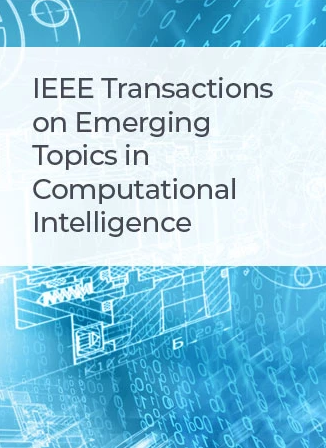使用细粒度伪标签的增强型邻接约束分层聚类法
IF 5.3
3区 计算机科学
Q1 COMPUTER SCIENCE, ARTIFICIAL INTELLIGENCE
IEEE Transactions on Emerging Topics in Computational Intelligence
Pub Date : 2024-04-02
DOI:10.1109/TETCI.2024.3367811
引用次数: 0
摘要
分层聚类能够提供不同粒度的分区。然而,现有的大多数分层聚类技术都是在数据的原始特征空间中进行聚类,而原始特征空间可能存在重叠、稀疏或其他不良特征,从而导致性能缺乏竞争力。在深度聚类领域,使用伪标签学习表示最近成为研究热点。然而,大多数现有方法都采用粗粒度伪标签,其中可能包含噪声或错误标签。因此,学习到的特征空间无法生成有竞争力的模型。在本文中,我们将有监督学习的细粒度标签思想引入到无监督聚类中,从而产生了增强型邻接约束分层聚类(ECHC)模型。整个框架包括四个步骤。首先,使用邻接约束分层聚类(CHC)生成相对纯粹的细粒度伪标签。其二,这些细粒度伪标签用于训练浅层多层感知器,以生成良好的表征。第三,每个样本在所学空间中的相应表示用于构建相似性矩阵。第四,使用 CHC 根据相似性矩阵生成最终分区。实验结果表明,所提出的 ECHC 框架不仅在 8 个真实世界数据集上优于 14 种浅层聚类方法,而且在 6 个真实世界数据集上超越了当前最先进的深度聚类模型。此外,在五个真实世界数据集上,ECHC 取得了与监督算法相当的结果。本文章由计算机程序翻译,如有差异,请以英文原文为准。
Enhanced Adjacency-Constrained Hierarchical Clustering Using Fine-Grained Pseudo Labels
Hierarchical clustering is able to provide partitions of different granularity levels. However, most existing hierarchical clustering techniques perform clustering in the original feature space of the data, which may suffer from overlap, sparseness, or other undesirable characteristics, resulting in noncompetitive performance. In the field of deep clustering, learning representations using pseudo labels has recently become a research hotspot. Yet most existing approaches employ coarse-grained pseudo labels, which may contain noise or incorrect labels. Hence, the learned feature space does not produce a competitive model. In this paper, we introduce the idea of fine-grained labels of supervised learning into unsupervised clustering, giving rise to the enhanced adjacency-constrained hierarchical clustering (ECHC) model. The full framework comprises four steps. One, adjacency-constrained hierarchical clustering (CHC) is used to produce relatively pure fine-grained pseudo labels. Two, those fine-grained pseudo labels are used to train a shallow multilayer perceptron to generate good representations. Three, the corresponding representation of each sample in the learned space is used to construct a similarity matrix. Four, CHC is used to generate the final partition based on the similarity matrix. The experimental results show that the proposed ECHC framework not only outperforms 14 shallow clustering methods on eight real-world datasets but also surpasses current state-of-the-art deep clustering models on six real-world datasets. In addition, on five real-world datasets, ECHC achieves comparable results to supervised algorithms.
求助全文
通过发布文献求助,成功后即可免费获取论文全文。
去求助
来源期刊

IEEE Transactions on Emerging Topics in Computational Intelligence
Mathematics-Control and Optimization
CiteScore
10.30
自引率
7.50%
发文量
147
期刊介绍:
The IEEE Transactions on Emerging Topics in Computational Intelligence (TETCI) publishes original articles on emerging aspects of computational intelligence, including theory, applications, and surveys.
TETCI is an electronics only publication. TETCI publishes six issues per year.
Authors are encouraged to submit manuscripts in any emerging topic in computational intelligence, especially nature-inspired computing topics not covered by other IEEE Computational Intelligence Society journals. A few such illustrative examples are glial cell networks, computational neuroscience, Brain Computer Interface, ambient intelligence, non-fuzzy computing with words, artificial life, cultural learning, artificial endocrine networks, social reasoning, artificial hormone networks, computational intelligence for the IoT and Smart-X technologies.
 求助内容:
求助内容: 应助结果提醒方式:
应助结果提醒方式:


